It’s no secret that nonfiction ignites the natural curiosity of readers. An exploration of nonfiction in the classroom offers opportunities to build upon readers’ interests, explore new vocabulary, and deepen background knowledge. Here are some recently published selections of informational trade books and picture book biographies to support content area instruction.
Ages 4–8
Dorothea’s Eyes. Barb Rosenstock. Ill. Gérard DuBois. 2016. Calkins Creek/Highlights.
 “Dorothea sees with her eyes and her heart.” Told in a lyrical style, this inspiring biography for young readers offers insights about the photographer Dorothea Lange, including her natural proclivity toward observation. Rosenstock presents information about Lange’s formative years (polio, displaced father, poverty), her keen awareness of the world around her, and her passion for becoming a photographer even when it wasn't considered ladylike. Lange’s photographs during the Great Depression brought awareness to pressing issues of hunger, homelessness, and poverty. DuBois’s acrylic and digital illustrations reflect the emotional and historical significance of the time. Single descriptive words in gray—“Different. Lonely. Watchful. Curious.”—and sentences in red—“Dorothea’s eyes help us see with our hearts.”— echo Lange's poignant journey. The back matter includes reproductions of six of Lange’s well-known photographs, an author’s note, a bibliography and sources for quotations, and a timeline. Readers will enjoy this beautiful tribute to a gifted photographer and artist. Partner the book with Migrant Mother: How a Photograph Defined the Great Depression (Nardo, 2011).
“Dorothea sees with her eyes and her heart.” Told in a lyrical style, this inspiring biography for young readers offers insights about the photographer Dorothea Lange, including her natural proclivity toward observation. Rosenstock presents information about Lange’s formative years (polio, displaced father, poverty), her keen awareness of the world around her, and her passion for becoming a photographer even when it wasn't considered ladylike. Lange’s photographs during the Great Depression brought awareness to pressing issues of hunger, homelessness, and poverty. DuBois’s acrylic and digital illustrations reflect the emotional and historical significance of the time. Single descriptive words in gray—“Different. Lonely. Watchful. Curious.”—and sentences in red—“Dorothea’s eyes help us see with our hearts.”— echo Lange's poignant journey. The back matter includes reproductions of six of Lange’s well-known photographs, an author’s note, a bibliography and sources for quotations, and a timeline. Readers will enjoy this beautiful tribute to a gifted photographer and artist. Partner the book with Migrant Mother: How a Photograph Defined the Great Depression (Nardo, 2011).
—MN
Fearless Flyer: Ruth Law and Her Flying Machine. Heather Lang. Ill. Raúl Colón. Calkins Creek/Highlights.
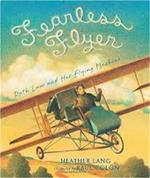 In this spirited picture book biography, readers learn about Ruth Law’s daring solo flight from Chicago to New York City in 1916. Law did not let social or gender norms limit her determination to break the record for the longest nonstop flight at the time. Lang’s rich descriptions provide insight into Ruth Law’s ingenuity, knowledge, sense of adventure, and perseverance. When Law decided to make her trip, she wanted to buy a larger airplane but was told that it was too powerful for a woman. Fearless, she made adjustments to her biplane, added extra fuel tanks, and strapped a compass and a map box to her legs to reach her goal despite adverse environmental factors and running low on gas. Law’s own words, featured in a different font, are interspersed across the book. Colón’s color pencil-and-lithograph crayon illustrations done in his distinctive artistic style complement the text with gorgeous hues while accentuating the shifting movement of the flight. Back matter includes further facts about Law, captioned photographs, source notes for quotations, and a bibliography.
In this spirited picture book biography, readers learn about Ruth Law’s daring solo flight from Chicago to New York City in 1916. Law did not let social or gender norms limit her determination to break the record for the longest nonstop flight at the time. Lang’s rich descriptions provide insight into Ruth Law’s ingenuity, knowledge, sense of adventure, and perseverance. When Law decided to make her trip, she wanted to buy a larger airplane but was told that it was too powerful for a woman. Fearless, she made adjustments to her biplane, added extra fuel tanks, and strapped a compass and a map box to her legs to reach her goal despite adverse environmental factors and running low on gas. Law’s own words, featured in a different font, are interspersed across the book. Colón’s color pencil-and-lithograph crayon illustrations done in his distinctive artistic style complement the text with gorgeous hues while accentuating the shifting movement of the flight. Back matter includes further facts about Law, captioned photographs, source notes for quotations, and a bibliography.
—MN
Freedom in Congo Square. Carole Boston Weatherford. Ill. R. Gregory Christie. 2016. Little Bee/Bonnier.
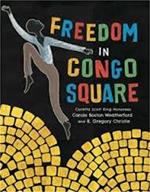 Freedom in Congo Square is an informational picture book that is a good read-aloud. Using rhyming text, Weatherford describes the tradition of slaves coming together on Sundays in Congo Square in New Orleans, Louisiana, in the early 1800s. The focus of the book is on the joy slaves found at these gatherings. “They rejoiced as if they had no cares; / half day, half free in Congo Square.” However, although it highlights and celebrates this little-known phenomenon, the book does not sugarcoat slavery: “The dreaded lash, too much to bear. / Four more days to Congo Square.” The colorful, evocative collage-style paintings set an upbeat tone and extend the content, for instance, by featuring African drums, tambourines, and other instruments. A foreword from a historian and Congo Square expert, a glossary, and an author’s note provide further information.
Freedom in Congo Square is an informational picture book that is a good read-aloud. Using rhyming text, Weatherford describes the tradition of slaves coming together on Sundays in Congo Square in New Orleans, Louisiana, in the early 1800s. The focus of the book is on the joy slaves found at these gatherings. “They rejoiced as if they had no cares; / half day, half free in Congo Square.” However, although it highlights and celebrates this little-known phenomenon, the book does not sugarcoat slavery: “The dreaded lash, too much to bear. / Four more days to Congo Square.” The colorful, evocative collage-style paintings set an upbeat tone and extend the content, for instance, by featuring African drums, tambourines, and other instruments. A foreword from a historian and Congo Square expert, a glossary, and an author’s note provide further information.
—LC
Their Great Gift: Courage, Sacrifice, and Hope in a New Land. John Coy. Ill. Wing Young Huie. 2016. Carolrhoda/Lerner.
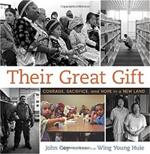 In scrapbook style, full-color and black-and-white photographs fill the pages of this book. The front endpapers feature snapshots of individuals, and many of the images throughout the book show families at school or work or in the community. Simple words are set against a white background telling the story of what it’s like to be an immigrant. One page addresses how families “shifted between languages, between cultures, between places” and shows children playing traditional instruments or wearing traditional clothing. Their Great Gift celebrates immigrants from around the world, offering talking points for young children and their caregivers. The author and photographer both tell their own immigration stories in the end matter, and the book closes with a nod to patriotism with endpapers showing fireworks.
In scrapbook style, full-color and black-and-white photographs fill the pages of this book. The front endpapers feature snapshots of individuals, and many of the images throughout the book show families at school or work or in the community. Simple words are set against a white background telling the story of what it’s like to be an immigrant. One page addresses how families “shifted between languages, between cultures, between places” and shows children playing traditional instruments or wearing traditional clothing. Their Great Gift celebrates immigrants from around the world, offering talking points for young children and their caregivers. The author and photographer both tell their own immigration stories in the end matter, and the book closes with a nod to patriotism with endpapers showing fireworks.
—LC
Ages 9–11
Cecil’s Pride: The True Story of a Lion King. Craig Hatkoff, Juliana Hatkoff, & Isabella Hatkoff. Ill. Brent Stapelkamp. 2016. Scholastic.
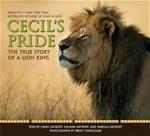 This well-written selection describes the poignant life of Cecil, a lion who once roamed the vast landscape in Zimbabwe’s Hwange National Park. Readers follow the story of a pride of lions, including its leader, Cecil. The authors include information about the challenges Cecil faced in defending his territory, the loss of his brother, details about his lioness and cubs, and how he formed an unusual alliance with his former rival, a lion named Jericho. The authors also provide information about Cecil’s cubs and the future of his pride after his death. Captioned color photographs appear on every page to illustrate Cecil at different moments of his life. The back matter includes facts about lions, information about Hwange National Park, and the global impact of hunting and wildlife preservation.
This well-written selection describes the poignant life of Cecil, a lion who once roamed the vast landscape in Zimbabwe’s Hwange National Park. Readers follow the story of a pride of lions, including its leader, Cecil. The authors include information about the challenges Cecil faced in defending his territory, the loss of his brother, details about his lioness and cubs, and how he formed an unusual alliance with his former rival, a lion named Jericho. The authors also provide information about Cecil’s cubs and the future of his pride after his death. Captioned color photographs appear on every page to illustrate Cecil at different moments of his life. The back matter includes facts about lions, information about Hwange National Park, and the global impact of hunting and wildlife preservation.
—MN
The First Step: How One Girl Put Segregation on Trial. 2016. Susan E. Goodman. Ill. E.B. Lewis. Bloomsbury.
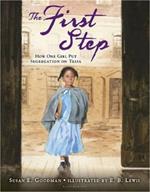 The story of Sarah Roberts pre-dates many of the stories of school desegregation and civil rights activism currently available in children’s books. For instance, it starts in 1847, and Sarah is only 4 years old when she enrolls in the Otis School in Boston. The trial involved both a white and an African American lawyer fighting for integration, and the climax of the story is a “giant step backward” as they lose the case. The First Step could easily be mistaken for historical fiction because of the narrative style, but the book was thoroughly researched and the author is forthright in describing her decisions as a writer in a detailed author’s note with sections titled “Gathering Facts From Places We Trust” and “Trying to Get at the Truth.” Lewis’s watercolor illustrations are somber in color and highly expressive. Most spreads feature double-page illustrations, but there are a few pages with scattered images. There are also carefully placed single-page illustrations, including one with a portrait of Robert Morris, Sarah’s lawyer, and another with Sarah in front of the Supreme Court judges. Back matter includes a timeline on integration, notes on what happened to key figures in Roberts v. City of Boston, sources and resources, and an author’s note.
The story of Sarah Roberts pre-dates many of the stories of school desegregation and civil rights activism currently available in children’s books. For instance, it starts in 1847, and Sarah is only 4 years old when she enrolls in the Otis School in Boston. The trial involved both a white and an African American lawyer fighting for integration, and the climax of the story is a “giant step backward” as they lose the case. The First Step could easily be mistaken for historical fiction because of the narrative style, but the book was thoroughly researched and the author is forthright in describing her decisions as a writer in a detailed author’s note with sections titled “Gathering Facts From Places We Trust” and “Trying to Get at the Truth.” Lewis’s watercolor illustrations are somber in color and highly expressive. Most spreads feature double-page illustrations, but there are a few pages with scattered images. There are also carefully placed single-page illustrations, including one with a portrait of Robert Morris, Sarah’s lawyer, and another with Sarah in front of the Supreme Court judges. Back matter includes a timeline on integration, notes on what happened to key figures in Roberts v. City of Boston, sources and resources, and an author’s note.
—LC
Ages 12–14
The Extraordinary Suzy Wright: A Colonial Woman on the Frontier. Teri Kanefield. 2016. Abrams.
 The format of this book is particularly appealing because of the picture book shape and size as well as the ample border space. In 10 chapters, readers learn of Susanna “Suzy” Wright’s journey to America from England at the age of 16, her life in Pennsylvania as a Quaker, and her accomplishments as a poet and activist. Design features such as pull quotes and sidebars are used throughout. Instead of beinga distraction, they offer some of the greatest insight into who Suzy Wright was. Readers will be enthralled by the photographs, maps, and archival material interspersed in just the right places. Thoroughly researched with an afterword, author’s notes, bibliography, and index, The Extraordinary Suzy Wright pays homage to this pioneering woman leader.
The format of this book is particularly appealing because of the picture book shape and size as well as the ample border space. In 10 chapters, readers learn of Susanna “Suzy” Wright’s journey to America from England at the age of 16, her life in Pennsylvania as a Quaker, and her accomplishments as a poet and activist. Design features such as pull quotes and sidebars are used throughout. Instead of beinga distraction, they offer some of the greatest insight into who Suzy Wright was. Readers will be enthralled by the photographs, maps, and archival material interspersed in just the right places. Thoroughly researched with an afterword, author’s notes, bibliography, and index, The Extraordinary Suzy Wright pays homage to this pioneering woman leader.
—LC
This Land Is Our Land: A History of American Immigration. Linda Barrett Osborne. 2016. Abrams.
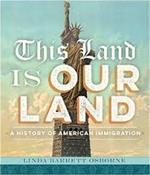 With exceptional care and attention to detail, Linda Barrett Osborne’s latest nonfiction work provides a comprehensive history of American immigration from the 19th century to the present. This outstanding work, organized into six chapters with color-coded edges, showcases Osborne’s accessible writing style as she juxtaposes history with personal anecdotes and quotations. Readers gain insight into how immigrants throughout history have faced numerous challenges, including hostility and isolation. She provides background information about political and social circumstances often associated with the topic of immigration and highlights the numerous benefits and contributions of immigrant populations over time. Insertion of high-quality archival photographs, illustrations, and captions offer further insights. The back matter includes a comprehensive bibliography, source notes, and a timeline.
With exceptional care and attention to detail, Linda Barrett Osborne’s latest nonfiction work provides a comprehensive history of American immigration from the 19th century to the present. This outstanding work, organized into six chapters with color-coded edges, showcases Osborne’s accessible writing style as she juxtaposes history with personal anecdotes and quotations. Readers gain insight into how immigrants throughout history have faced numerous challenges, including hostility and isolation. She provides background information about political and social circumstances often associated with the topic of immigration and highlights the numerous benefits and contributions of immigrant populations over time. Insertion of high-quality archival photographs, illustrations, and captions offer further insights. The back matter includes a comprehensive bibliography, source notes, and a timeline.
—MN
Ages 15+
Last of the Giants: The Rise and Fall of Earth’s Most Dominant Species. Jeff Campbell. Ill. Adam Grano. 2016. Zest.
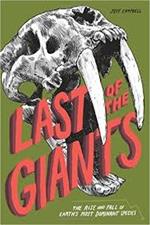 Told in an accessible conversational tone, Jeff Campbell chronicles the extinction of 13 giant species, including the moa, auroch, and passenger pigeon, which once dominated the landscape. Readers gain insight into the complexity of ecosystems and evolution through the loss of these species. Campbell poses thought-provoking questions: What’s happening to cause extinction? Why are so many species failing right now, and what role do humans play in the crisis? What is the danger, to us and nature, when species fail? What can we do to save species before they go extinct? Campbell’s well-researched account draws from geology, zoology, biology, and history. Black-and-white illustrations, maps, fact pages, and quotations enhance this important work. The back matter includes a special section entitled “Call to Action” with a plethora of resources and strategies to make a difference. This impressive work, with an extensive list of citations, offers readers much to contemplate.
Told in an accessible conversational tone, Jeff Campbell chronicles the extinction of 13 giant species, including the moa, auroch, and passenger pigeon, which once dominated the landscape. Readers gain insight into the complexity of ecosystems and evolution through the loss of these species. Campbell poses thought-provoking questions: What’s happening to cause extinction? Why are so many species failing right now, and what role do humans play in the crisis? What is the danger, to us and nature, when species fail? What can we do to save species before they go extinct? Campbell’s well-researched account draws from geology, zoology, biology, and history. Black-and-white illustrations, maps, fact pages, and quotations enhance this important work. The back matter includes a special section entitled “Call to Action” with a plethora of resources and strategies to make a difference. This impressive work, with an extensive list of citations, offers readers much to contemplate.
—MN
Samurai Rising: The Epic Life of Minamoto Yoshitsune.Pamela S. Turner. Ill. Gareth Hinds. 2016. Charlesbridge.
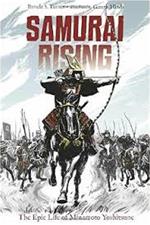 The story of the legendary samurai Minamoto Yoshitsune is told here in a narrative style and with an irreverent tone. The book is a unique blend of history, biography, adventure, and war chronicle. Readers are not spared the gory details. The first decapitation occurs on page 5: “Only his head returned to Kyoto. The bloody trophy was tied to a sandalwood tree beside the Kyoto prison gates.” This head belonged to Yoshitsune’s father. Yoshitsune’s story begins and ends with violence, but in between readers get to know him as a valiant warrior, conflicted leader, and political figure. The author makes the context of Japanese history and geography accessible to readers by providing a pronunciation guide, glossary, and maps. The text of story ends on page 155, but back matter continues through page 236 with detailed chapter notes that would impress any historian. Author’s notes offer explanations for aspects of the story that may be confusing or questionable (for instance, a note on names and a note on dates used in the text). Back matter also includes two timelines: Yoshitsune and the Wider World and Major Periods of Japanese History, a glossary of Japanese Words, an extensive bibliography, and an index. Gareth Hinds’s illustrations function as a design feature with arrows dividing chapter sections and black-and-white sketches foreshadowing the action in each chapter.
The story of the legendary samurai Minamoto Yoshitsune is told here in a narrative style and with an irreverent tone. The book is a unique blend of history, biography, adventure, and war chronicle. Readers are not spared the gory details. The first decapitation occurs on page 5: “Only his head returned to Kyoto. The bloody trophy was tied to a sandalwood tree beside the Kyoto prison gates.” This head belonged to Yoshitsune’s father. Yoshitsune’s story begins and ends with violence, but in between readers get to know him as a valiant warrior, conflicted leader, and political figure. The author makes the context of Japanese history and geography accessible to readers by providing a pronunciation guide, glossary, and maps. The text of story ends on page 155, but back matter continues through page 236 with detailed chapter notes that would impress any historian. Author’s notes offer explanations for aspects of the story that may be confusing or questionable (for instance, a note on names and a note on dates used in the text). Back matter also includes two timelines: Yoshitsune and the Wider World and Major Periods of Japanese History, a glossary of Japanese Words, an extensive bibliography, and an index. Gareth Hinds’s illustrations function as a design feature with arrows dividing chapter sections and black-and-white sketches foreshadowing the action in each chapter.
—LC
Lesley Colabucci is an associate professor at Millersville University of Pennsylvania where she teaches courses in children’s/adolescent literature. Mary Napoli is an associate professor of reading at Penn State Harrisburg where she teaches literacy courses.
These reviews are submitted by members of the International Literacy Association's Children's Literature and Reading Special Interest Group (CL/R SIG) and are published weekly on Literacy Daily.